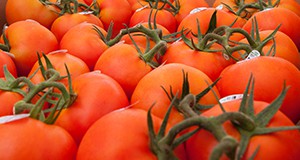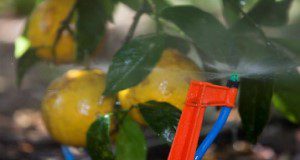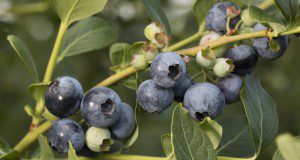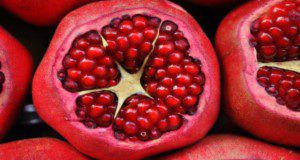To improve production of huanglongbing (HLB) affected trees, nutrition, irrigation, and soil pH should be considered together, because each can influence the efficacy of the others in overcoming the effects of HLB on tree performance. This two-sided poster published by the UF/IFAS Horticultural Sciences Department through the UF/IFAS Citrus Research and Education Center was written by Tripti Vashisth, Davie Kadyampakeni, and Jamie D. Burrow.
https://edis.ifas.ufl.edu/hs1367
Tag: fertilization
Nutrition and Fertilization Practices for Southern Highbush Blueberry in Florida
Research and field experience have demonstrated that fertilization is necessary to achieve proper growth and high yields in cultivated production of blueberries. This new 7-page publication of the UF/IFAS Horticultural Sciences Department provides guidance and management suggestions to Florida growers of southern highbush blueberry (SHB) for monitoring, supplying, and maintaining proper plant nutrition in commercial production operations. Written by Doug Phillips and Jeffrey G. Williamson.
https://edis.ifas.ufl.edu/hs1356
Guidelines for Pomegranate Nutrient Management in Florida
Many Florida growers are interested in the potential of pomegranate as an alternative fruit crop. The first flush of flowers produces the best quality fruit, and climatic conditions have a great impact on the timing of flowering. Proper fertilization is critical to promote healthy canopy development, minimize nutrient disorders, and maximize fruit yield and quality. This new 5-page article, written by Shinsuke Agehara, Weining Wang, and Ali Sarkhosh and published by the UF/IFAS Horticultural Sciences Department, provides guidelines for pomegranate nutrient management in Florida.
https://edis.ifas.ufl.edu/hs1347
Implementing the Four Rs (4Rs) in Nutrient Stewardship for Tomato Production
 Fertilization plays a critical role in tomato production across the state of Florida. However, appropriate fertilization management depends on four major components (4Rs): right source, right rate, right placement, and right timing. Farming practices that follow the 4Rs can provide nutrients for optimal tomato productivity while minimizing the risk of nutrient losses and adverse environmental effects, both of which are important to the development of agricultural sustainability. This 6-page fact sheet discusses the 4Rs as well as conventional dry source fertilizers, controlled-release or slow-release source fertilizers, and liquid source fertilizers. Written by Qingren Wang, Guodong Liu, Kelly Morgan, and Yuncong Li, and published by the UF Department of Horticultural Sciences, October 2015.
Fertilization plays a critical role in tomato production across the state of Florida. However, appropriate fertilization management depends on four major components (4Rs): right source, right rate, right placement, and right timing. Farming practices that follow the 4Rs can provide nutrients for optimal tomato productivity while minimizing the risk of nutrient losses and adverse environmental effects, both of which are important to the development of agricultural sustainability. This 6-page fact sheet discusses the 4Rs as well as conventional dry source fertilizers, controlled-release or slow-release source fertilizers, and liquid source fertilizers. Written by Qingren Wang, Guodong Liu, Kelly Morgan, and Yuncong Li, and published by the UF Department of Horticultural Sciences, October 2015.
http://edis.ifas.ufl.edu/hs1269


